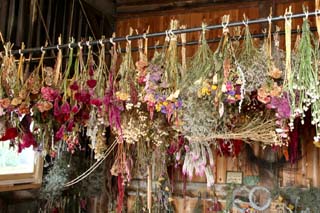
When you are getting the car winterized and preparing the house for winter, you have to remember to give your lawn and garden some attention as the cold and snow draw near. Nellie Gardner, horticulturist at Springdale Farms on the Sweden-Ogden border, said the best way to begin is to clean out dead plants and weeds and any other debris that might have accumulated in and around the garden beds. “Anything that is seeded out or dead should be removed,” she said. “Some plants with seed pods don’t look too bad and those can stay.” Other weeds, like dandelions, need to be dug out or they will remain in the ground and will be waiting for you in the spring, she said. Getting rid of dead foliage and dead growth on perennials is a step to take that not only prepares the garden and flower beds ready for planting and new growth in the spring but can prevent winter pests from burrowing in. Gardner cautions individuals to not put diseased foliage or weeds with seed pods on the compost pile. “They will come back to haunt you in your garden,” she said. “Pig weed, ragweed and lamb’s quarter are three very common annual weeds that are full of seeds waiting to drop for the next year - make sure they don’t overwinter in your garden or find their way into the compost pile.” Compost is a good material when covering plants, Gardner said, because it is usually free of weeds and seeds that could be found in mulch. A simple rule of thumb is to “cut back things that just don’t look good,” she said. “I do have a lot of ornamental grasses and some plants with seed pods that look good and provide interest in the garden for the winter, and those I leave.” Springdale Farm received a donation of fig trees and Gardner said they have to be cut back but gardeners should wait until the first frost to do so. “If you cut figs back before they freeze, you run the risk of mouse damage,” she said. “Once the first freeze comes, the mice are dormant. Once the tree is cut back, cover it with a dome of mulch or branches - something that will catch the snow and protect the plant.” Gardner says that bushes and shrubs in most areas are overgrown this year because of the abundance of rain. “It’s better to trim back plants like forsythia - it grows like a weed and if it isn’t trimmed back it will have long, unruly shoots and the long branches could become weighted down with snow, flop over and break.” Trimming early blooming shrubs at this time of the year will sacrifice some of the spring blooming however. Not all of the work in the garden in the fall involves scooping debris, cutting branches and raking up leaves. Gardner said the whole month of October is a good time to plant bulbs for spring blooming. “Plant the bulbs where you won’t plant in the spring - you don’t want to dig them up by accident when planting spring flowers,” she said. “Make sure the bulbs are buried at least six inches deep. Remember that daffodils are resistant to damage by deer and squirrels but tulips are like candy to deer, squirrels and mice.” Gardner is a fan of daffodils because they offer early and late blooms and come in a variety of sizes and some are scented. “With the varieties that are out there (in garden stores) you could have daffodils blooming all of April and May and then have tulips coming up in May and June.” “With proper care, you really can have a year-round garden to enjoy, even with our winters,” she said. October 1, 2006 |

